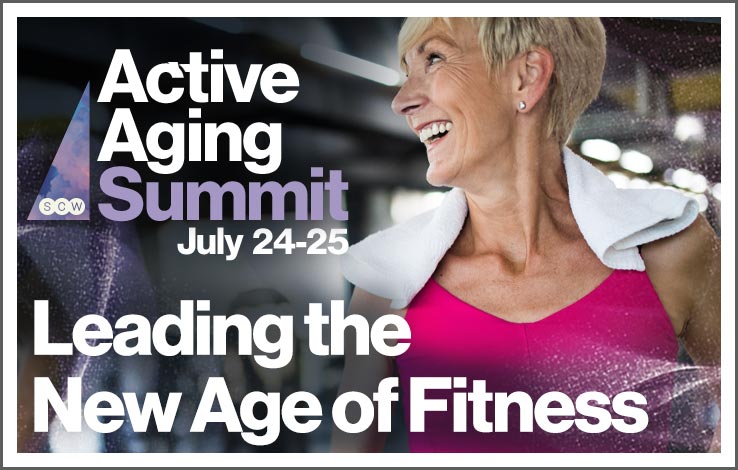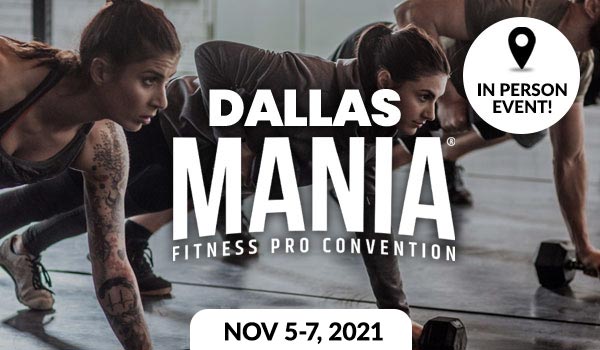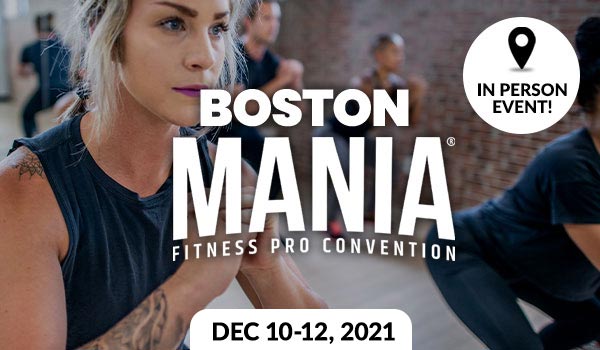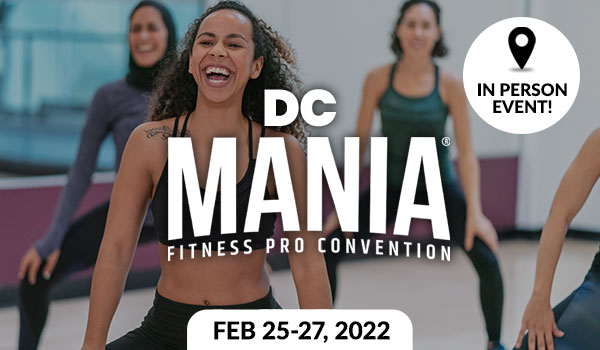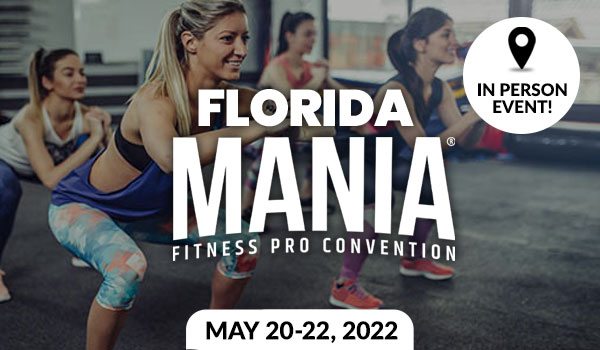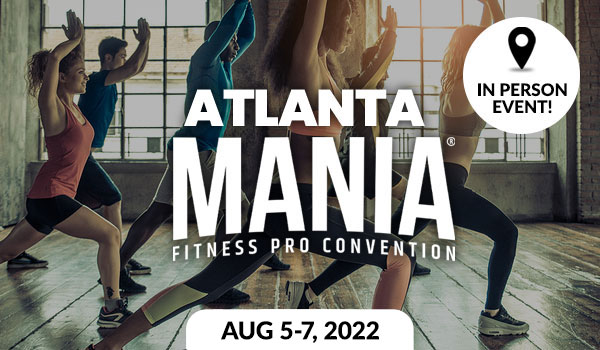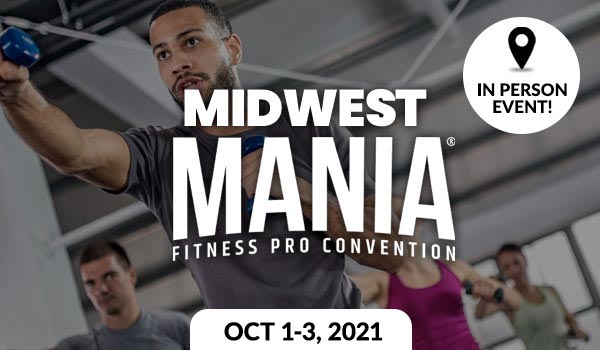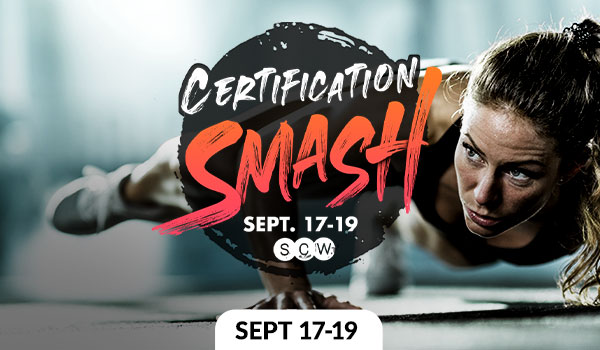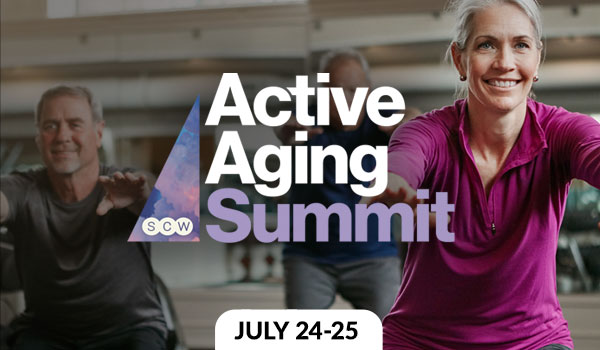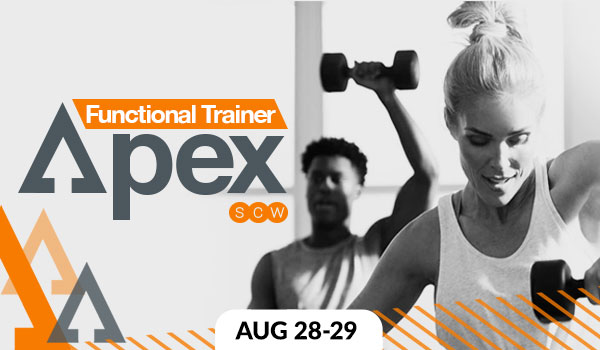
SCW Spotlite: Issue 34

Bite Into Active Aging Nutrition
by Tricia Silverman, RD, LDN, MBA
Over ten years ago, I was asked to teach a nutrition program at a senior center. It was the beginning of a wonderful journey working with Active Aging groups at gyms and senior living facilities. In 2012, I started teaching a class titled Healthy Aging: Nutrition Strategies for Optimal Longevity at Northeastern University. This led to my fascination with longevity and the factors that lead to a longer, stronger life.
 When Sara Kooperman, CEO of SCW Fitness Education asked me to write and lead the Active Aging Nutrition Certification, I was honored and excited to share my knowledge with eager-to-learn fitness professionals throughout the United States and across the globe.
When Sara Kooperman, CEO of SCW Fitness Education asked me to write and lead the Active Aging Nutrition Certification, I was honored and excited to share my knowledge with eager-to-learn fitness professionals throughout the United States and across the globe.
This extremely vital certification is designed to share research-based, current insights on the nutritional needs for clients over the age of 50. Participants learn practical tips regarding body mass, mental cognition, body fat, vitamins and minerals and much more. They also hear about nutritional strategies regarding longevity from regions around the world and sharpen their Active Aging nutrition knowledge to increase their marketability to this population.
Here is just a taste of this incredible Active Aging Nutrition Certification. I hope you choose to join me live at the upcoming Active Aging Nutrition Certification on June 18.
-Tricia Silverman, Registered Dietitian, Fitness Instructor, Wellness Coach, Author of Healthy Dividends: Investments in Nutrition, Movement, and Healthy Habits that Pay Off (available at the SCW online store).
Eat for Brain Health and Mental Well-Being
(Excerpt from Active Aging Nutrition Manual)
Tricia Silverman, RD, MBA
There are many nutrition strategies that the Active Ager can implement to augment mental functioning and mental well-being, and decrease the risk for memory impairment, dementia, Alzheimer’s and depression.
- Consider following the Mediterranean Diet. Following the Mediterranean Diet may be especially helpful for memory, as well as overall cognitive performance. (The manual contains an overview of the Mediterranean Diet in Chapter 6).
- Eat more fish and vegetarian sources of omega-3 fatty acids: Since omega-3 fatty acids are a part of the structure of brain cells, it is no surprise that eating them is associated with brain health. Research has found a that people with lower intake of the fatty acids DHA and EPA have higher rates of depressive disorders. Experts have found that fish consumption may protect against dementia in a dose-related fashion, and unrefined cereal grains are particularly noteworthy for cognitive benefits.
- Eat antioxidant-rich food daily. Low intake of antioxidants in the diet, is associated with cognitive impairment and Alzheimer’s disease, however it is unclear if this intake is the cause or result. A review of antioxidant research found that dietary intake of vitamin C may be helpful in certain parameters of cognitive performance. The same review found that dietary vitamin E may slow the rate of cognitive decline and reduce the risk for Alzheimer’s disease. Beta carotene rich foods may enhance cognitive functioning.It is important to meet the dietary recommended intake levels of antioxidants, and a multivitamin is indicated if these levels cannot be met through food intake. The best way to ingest antioxidants is through whole foods and not pills or extracts, which may have side effects and contraindications. The combination of natural bioactive components in plant foods appear to have synergistic beneficial health effects compared to when these compounds are isolated.
- Consume at least three servings (or more than 200g) of vegetables per day. This has been associated with lower risk of dementia and slower cognitive decline with age. In particular, cruciferous vegetables, legumes, and green leafy vegetables, and especially noteworthy are cabbage, zucchini, squash, broccoli, and lettuce. Garlic and the compound resveratrol may prevent against Alzheimer’s disease and cognitive decline. Resveratrol is found in peanuts, pistachios, grapes, red wine, blueberries, bilberries, cranberries, and cocoa.
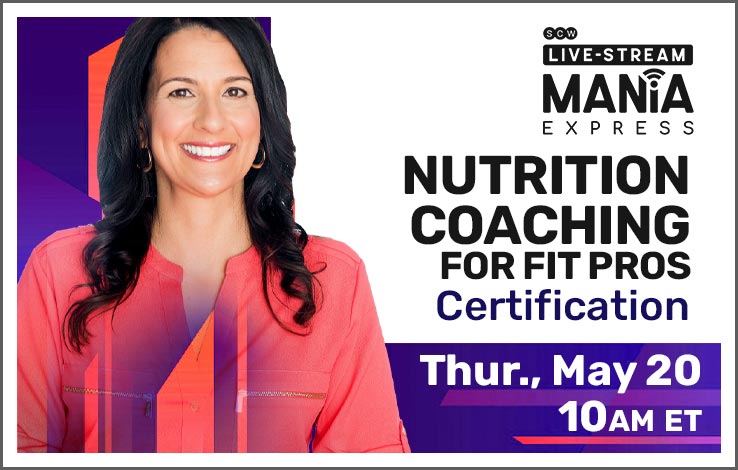 Eat unsaturated fats. A higher ratio of mono and polyunsaturated fats compared with saturated fats is associated with a lower risk for mild cognitive impairment, a stage between healthy aging and dementia.
Eat unsaturated fats. A higher ratio of mono and polyunsaturated fats compared with saturated fats is associated with a lower risk for mild cognitive impairment, a stage between healthy aging and dementia.- Keep alcohol intake moderate. (Chapter 3 in the manual provides more information on consuming alcohol in moderation)
- Ensure adequate intake of B vitamins and Vitamin D, protein, and choline. Researchers have found that those people who consume higher levels of folate, vitamin B6 and B 12 have less late-life depression. Vitamin D deficiency is also associated with late-life depression. Dietary protein provides the amino acid tryptophan, which is needed to make serotonin, a feel-good chemical in the body that can help with late-life depression. Dietary choline helps to synthesis of acetylcholine in the body, which is a neurotransmitter important for memory. In Alzheimer’s disease, there is a deficit of choline. (The manual includes for important food sources of these nutrients.)
- Keep caffeine intake moderate. Research points to a protective role of coffee, tea, and caffeine, which may reduce the risk of cognitive impairment, dementia and Alzheimer’s disease. More research is needed to know the best doses. In the meantime, moderation is key. Also, if active agers are having trouble sleeping, then a decrease in caffeine may be warranted. The US Dietary guidelines lists moderate caffeine consumption as a limit of 400 mg per day (3-5 8oz cups of coffee), noting that most of the research on caffeine has been done on coffee.Caffeinated coffee beverages include drip/brewed coffee (12 mg/fl oz), instant coffee (8 mg/fl oz), espresso (64 mg/fl oz), and specialty beverages made from coffee or espresso, such as cappuccinos and lattes. Amounts of caffeine in other beverages such as brewed black tea (6 mg/fl oz), brewed green tea (2-5 mg/fl oz), and caffeinated soda (1-4 mg/fl oz) also vary. Beverages within the energy drinks category have the greatest variability (3-35 mg/fl oz).
Table 23 Amount of Caffeine Per Ounce in Common Caffeinated Beverages
| Amount of Caffeine Per Ounce in Common Caffeinated Beverages | |
|---|---|
| Caffeinated beverage | Amount of Caffeine Per Oz |
| drip/brewed coffee | 12 mg/fl oz |
| instant coffee | (8 mg/fl oz), |
| espresso | 64 mg/fl oz |
| brewed black tea | 6 mg/fl oz |
| brewed green tea | 2-5 mg/fl oz |
| caffeinated soda | 1-4 mg/fl oz |
| energy drinks | 3-35 mg/fl oz |
9. Decrease consumption of diet soda. Research shows there may be an association between diet soda consumption and dementia and stroke.
Hope you enjoyed this tidbit of education. If you have any questions about the certification, feel free to reach out at tricia@triciasilverman.com. I will be leading the certification on Friday, June 18th at the pre-con certifications for the Nutrition Coaching Summit on Saturday, June 19. This one-day conference focuses on areas of nutrition like Food Timing, Myths & Misconceptions, Coaching & Business, as well as Sleep & Specialties. Join me and many other specialized presenters and choose from 24 focused sessions while earning CECs from SCW, NASM, ACE, AFAA, ACSM and AEA starting at only $99. This exceptionally affordable opportunity to learn from the best-of-the-best can’t be missed. Register here for the Nutrition Coaching Summit.
 About the Author, Tricia Silverman, RD, LDN, MBA
About the Author, Tricia Silverman, RD, LDN, MBA
Tricia is a registered dietitian, fitness instructor, and wellness coach. She is an international virtual and live presenter, and the author of the award-winning international Amazon Bestseller, Healthy Dividends: Investments in Nutrition, Movement, and Healthy Habits that Pay Off. She developed and leads the SCW Nutrition for Active Aging Certification. Tricia teaches Nutrition Entrepreneurship and Healthy Aging for Northeastern University, and serves as the Faculty Lead, where she helps oversee the Applied Nutrition Program and the Certificate in Integrative Health and Wellness.

Covid Proof: Legal Essentials for Fitness Pros & Studio Owners
by Cory Sterling
 COVID-19 has completely changed how the fitness world operates. The laws and regulations that were in place prior to the pandemic have modified. As a result (and in order to keep your business protected) your legal agreements must alter as well.
COVID-19 has completely changed how the fitness world operates. The laws and regulations that were in place prior to the pandemic have modified. As a result (and in order to keep your business protected) your legal agreements must alter as well.
As an attorney who has worked with hundreds of fitness studio owners and professionals, there are certain steps you can take to ensure your business, practice, or facility is secure in this new legal landscape.
Here are the key legal essentials (COVID-proof) to have in place for a strong, secure foundation.
Update Your Waiver of Liability
In its most basic form, a waiver protects you from being sued. Whether for a regular membership, hosting a fitness class or teaching virtually, via Zoom or Instagram Live, you’ll need a waiver before working with your clients.
The following is a 4-step guide to a locked and loaded waiver of liability for your heart-leading business:
- Clearly define the activity you and your client will participate in: What is your role in this movement and what does the activity entail?
- Communicate the risks: Be open and honest in your communication including what can go wrong in the course of the activity.
- Client makes a choice: Does the client understand the risks involved and voluntarily agree to engage in the activity?
- Client signature: Have the client sign the waiver to relinquish future claims and release you from liability.
The key is to be open, honest, and clear. A waiver will not apply to protect your business if that document contains ambiguous terms. This is why it is so important that you understand your business and what parts of your business your waiver of liability covers.
COVID Proof: Whether you like it or not, having a client test positive for COVID-19 is a possibility you need to be prepared for. Have a legal waiver in place that includes specific language about students taking a risk of contracting COVID-19 while participating in classes. By doing so, you’re no longer liable for COVID-19 related issues that may arise. Paying a small fee for a legal document that protects you from COVID-19 related legal issues is a no brainer!
Re-evaluate Your Service Agreements
Update your membership or service agreements to protect your business from chargebacks or disputes. Adding some simple legal language goes a long way in protecting you against cancellations or terminations made outside the scope of your agreement.
For example, define your services as being offered BOTH online and in-person so you aren’t entitled to a refund if you cannot offer in-person classes. You should also add a force majeure clause to your agreements to protect you from unforeseeable circumstances that might prevent you from fulfilling your contract.
Properly Identify Employer vs. Contractor Agreements
Are the amazing individuals that help your heart-leading business considered employees or contractors? This is one of the most common (and most important) agreements you will come across in your business, as there are operational and legal implications that attach to each class. What’s the difference?
 Employees are generally under more of the employer’s control than are contractors: they have set hours, complete work as instructed, use the business’ property to carry out their tasks, and may wear the business logo or uniform. Employees have rights under employment legislation – think maximum hours, statutory holiday pay, or rules around leaves of absence. And since you love and trust your employees, you’ll want to make sure their legal entitlements are respected.
Employees are generally under more of the employer’s control than are contractors: they have set hours, complete work as instructed, use the business’ property to carry out their tasks, and may wear the business logo or uniform. Employees have rights under employment legislation – think maximum hours, statutory holiday pay, or rules around leaves of absence. And since you love and trust your employees, you’ll want to make sure their legal entitlements are respected.
Contractors are essentially an individual or a group with a specialization who you hire to perform work for your business. They have control over their schedule, freedom to choose how they carry out their work, they use their own materials, and may contract out their services to many different people or businesses at once. Think of a bookkeeper, graphic designer, or an expert in the trades.
Why does it matter?
In short, the distinction between employees and contractors matters because of the tax implications. As a business owner paying an employee, you deduct taxes for them and this is reflected on the employee’s pay stub. But when you pay a contractor, you pay them in full and they are responsible for taking care of their own taxes later.
So, think of employees and contractors as two separate streams. How they each navigate their path is different, their tasks and processes are unique. But they return to the same body of water, the ocean that is your business.
Be Proactive. Be safe. Have Fun! The World Needs You.
 While this period of time has challenged the fitness industry, it has presented us with an opportunity to strengthen our businesses. Use this time to be strategic: make your business stronger, and more legally protected than ever.
While this period of time has challenged the fitness industry, it has presented us with an opportunity to strengthen our businesses. Use this time to be strategic: make your business stronger, and more legally protected than ever.
Last but not least, thank you. The world needs wellness now more than ever. It’s leaders like YOU who choose to show up that make a difference.
If you are interested in any of Conscious Counsel’s COVID-19 Legal Packages or if you are looking for legal help in this new commercial landscape, contact us today and mention you are with the SCW Fitness Community to receive 10% off your future Conscious Counsel legal agreement.
Would you like a free fitness legal checklist to ensure you’re at best legal practices for your gym? You can access that for free here.
For more legal education and advice from Conscious Counsel, register for the Health & Fitness Business Summit, within Live Stream MANIA® Express, May 21-23. Join Cory Sterling for his session on Legal Essentials in a Covid World, along with many other expert business leaders presenting in this not-to-be-missed SCW Fitness conference.
 About the Author, Cory Sterling
About the Author, Cory Sterling
Cory Sterling is the Founder of the heart-leading law firm Conscious Counsel, a lawyer, yoga teacher and group fitness instructor. He wrote The Yoga Law Book and has served hundreds of fitness professionals and studio owners around the world. He won the award for “Highest Rated Session” at MindBody Bold and stays committed every day to teach about the law in a FUN and practical way. Email Cory here cory@consciouscounsel.ca or visit Conscious Counsel here.

Bridging the Gap Between Party On the Bike and Metrics Driven Indoor Cycling
by Andrea Austin
For many years, indoor cycling has had two often opposing focused class styles: metrics driven, road focused instructors/classes/studios that are committed to science and athletic performance versus music driven, party on the bike rhythm riders/classes/studios that just want to have fun. These two varying formats, instructors and studios have their followers and have valid arguments as to why their classes should be emphasized.
 With so much weight placed on performance-based indoor cycling and its real-ride approach since its inception, there was (and is) a large population of individuals that considered this style of cycling dull. Those individuals found themselves staying away from indoor cycling classes. They often felt bogged down by the data and missed out on their much needed release from daily life.
With so much weight placed on performance-based indoor cycling and its real-ride approach since its inception, there was (and is) a large population of individuals that considered this style of cycling dull. Those individuals found themselves staying away from indoor cycling classes. They often felt bogged down by the data and missed out on their much needed release from daily life.
Likewise, with the plethora of rhythm focused classes, instructors and studios, the “wild, wild west” of indoor cycling has gained traction creating an “anything goes as long as it is fun” emphasis. Although this style of indoor cycling does have its many followers, the concern of the fitness industry and its education focused instructors/studios has been the lack of safety, science and purpose to all those partying on the bike.
Out of this long standing division in the indoor cycling arena, BeatBoss™ was born!
Marrying the driving beat of the music with metrics, plus optional safe and research-based Upper Body Add-ons, BeatBoss™ has created a game-changing indoor cycling certification and continuing education instructor coaching course. In addition, BeatBoss™ adds a science focused purpose to the indoor cycling party with unique inspiration from Road, Mountain and BMX biking for fantastic cross training purpose.
From no metrics to adding bike monitor consoles and even more complex performance tracking technology systems (Watts and Heart Rate driven), BeatBoss™ is super flexible and can utilize none or all of the stated technology very successfully! Plus, because BeatBoss™ Branded Methodology is beat driven the fun factor is very high. Riders and class members love it, not only are they are learning, but having a super fun party on the bike (member retention and growth).
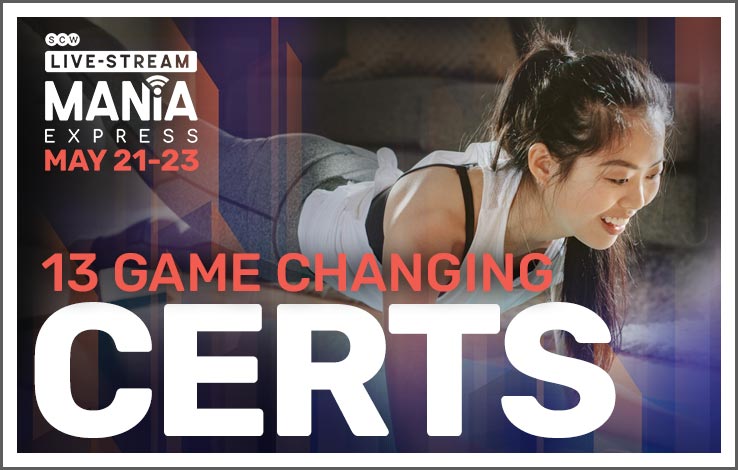 Whether you are an individual or a team of instructors, brand new to coaching indoor cycle or are a veteran instructor, BeatBoss™ is for you! Catering to all levels of fitness with a body positive approach from teens to seniors, BeatBoss™ has a “fits like a glove” class format to meet the needs of all riders and class members with a fresh approach.
Whether you are an individual or a team of instructors, brand new to coaching indoor cycle or are a veteran instructor, BeatBoss™ is for you! Catering to all levels of fitness with a body positive approach from teens to seniors, BeatBoss™ has a “fits like a glove” class format to meet the needs of all riders and class members with a fresh approach.
Leading with positivity, join Team BeatBoss™ at the upcoming SCW Live Stream MANIA®, May 21-23. Our team of experts are leading sessions focusing on Applied Science of Movement and Biking Styles. We can also be found on Facebook: BeatBoss and Instagram: BeatBoss Indoor Biking. Learn how we can serve you, your riders and members, as well as help refresh teaching skills as an indoor cycling professional or team. Here’s your opportunity to bridge the gap and reach even more people to help attain a healthier, happier life!
 About the Author, Andrea Austin, Owner & CEO BeatBoss™ Indoor Biking & Consulting
About the Author, Andrea Austin, Owner & CEO BeatBoss™ Indoor Biking & Consulting
With over 30 years in the fitness industry, Andrea brings long standing expertise in group exercise, indoor cycling and personal training when creating and presenting the BeatBoss™ Methodology. She has a passion for innovation and creative problem solving and loves to positively share her insights with those learning from her. Andrea holds multiple fitness and wellness certifications including NASM Personal Trainer with specialty focuses in STOTT Pilates, Vinyasa and Yin Yoga, the study of fascia and movement, and active aging. Visit Beat Boss here.

How Chair Fitness is Winning the Online Game
by Fit Pro Show Podcast- Fit Pros Connect with Kelly Coulter
Join Kelly Coulter as she interviews the “Queen” of Chair Fitness, Alexis Perkins, Founder and Creative Director of Chair One Fitness. Tune in and learn the secrets to virtual fitness and her inspiration behind her revolutionary style of fitness.
If you’re interested in learning more about Chair One Fitness, register for the pre-con certification on Thursday, May 20th, as well as sessions like FUNctional Chair-Based Dance Fitness being led by Alexis at Live Stream MANIA® Express, May 21-23.
 About the Author, Jane Curth
About the Author, Jane Curth
Jane Curth has taught college for over 20 years, has presented at 18 local and national conferences and is an ACE (American Council on Exercise) certified trainer. During her tenure at the college she developed many online courses in her career and turned that expertise into her company, FitFixNow. The purpose of this new company is to offer online courses to fitness professionals so they can get their continuing education credits at an affordable price and at their convenience. FitFixNow’s purpose is to help bring this industry into the new millennium.
In addition to being the CEO of FitFixNow, Jane is a consultant and model for Silver Sneakers, and is a former member of the over-50 hip-hop Atlanta dance group, Silver Classix Crew, performing at several Atlanta Hawks games, charity events, television shows, and festivals. Jane also likes sharing her knowledge with the next generation by being actively involved in The Mentor Project.
She enjoys spending time with her husband, grown kids, and grandkids. She loves reading, creating new courses, and her precious rescue dog Allie.

Help Clients Make Symptoms of Aging Optional
by Sue Hitzmann, MS, CST, NMT
It’s probably safe to say that your decision to become a fitness professional was inspired at least in part by a passion for helping people live their best life—a life that’s vibrant, active, and full of energy and vitality. Addressing and preventing conditions and symptoms associated with aging is at the heart of that mission.
 One thing is for sure—we are all actively aging. Whether or not we’re earnestly preventing the negative effects we associate with getting older is another story. Clients at retirement age are a growing and important segment that we, as fitness pros, need to devote efforts to helping. These folks have the time and money to invest in their health (in fact, people aged 57 and up have way more discretionary cash to invest in their well-being than Gen X and Millennials) and they also have a compelling, urgent reason to get and stay fit. The concerns often manifest as chronic pain, systemic conditions, and mobility issues that threaten health and independence. And what do we have if we aren’t healthy and independent?
One thing is for sure—we are all actively aging. Whether or not we’re earnestly preventing the negative effects we associate with getting older is another story. Clients at retirement age are a growing and important segment that we, as fitness pros, need to devote efforts to helping. These folks have the time and money to invest in their health (in fact, people aged 57 and up have way more discretionary cash to invest in their well-being than Gen X and Millennials) and they also have a compelling, urgent reason to get and stay fit. The concerns often manifest as chronic pain, systemic conditions, and mobility issues that threaten health and independence. And what do we have if we aren’t healthy and independent?
Understanding those facets of an aging client’s mindset and being responsive in your offerings, brings life-changing value to your services and relationships. Not surprisingly, it ends up as a boon to your fitness business, as well. Engaging and incentivizing frequent attendance across your market of older clients can add to your bottom line—they’re highly likely to spend on non-dues related services such as training and sports-specific instruction. This is where MELT comes in as a prime offering to both retain members and create a new option more appealing to older adults.
Maintaining a level of fitness is undeniably a part of the aging equation and is linked with better physical and mental outcomes as we grow older. But there are certain aspects of overall wellness even the most well-rounded workout programs can’t touch—the key lies in the neurofascial system. The MELT Method was developed based on cutting-edge research and is the only self-treatment technique that affects both connective tissue system (also known as fascia) and the nervous system—a combination that lets you tap into the body’s own healing mechanisms to reduce chronic pain, boost stability and mobility, and help prevent injuries and restrictions. (Basically, all the things we associate with aging.) When added to your offerings as pre or post workout practice or as stand-alone sessions, the outcomes can be dramatic and transformational. And they can be achieved in as little as three, 10-minute sessions a week.
The MELT Method’s gentle techniques are suitable for any age and ability and are easy to learn and teach, making them a valuable addition to your line-up. MELT is designed to cross pollinate the two key sectors of any health club: one-on-one sessions and group training instruction. Just one training will teach you how to share the method in both demographics and grow your revenue base exponentially.
Interested in teaching MELT? Registrations are open for Level 1 Instructor training.
Join us starting June 1st and access a flexible mix of pre-recorded and interactive, live sessions offered 100% online, plus community support, workbooks, and much more. You’ll learn everything you need to be certified, teaching, and transforming your clients relationship with their body by the end of August.
If you’re interested in more sessions with the experts at MELT Method, check out the upcoming SCW Active Aging Summit, July 24-25, with over 50 sessions focused on training and guiding the largest growing age population.
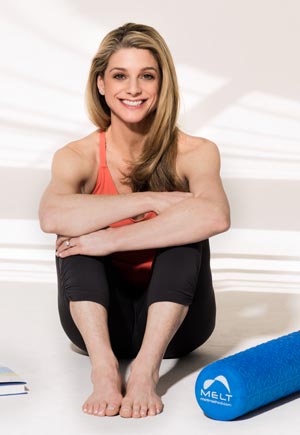 About the Author, Sue Hitzmann, MS, CST, NMT
About the Author, Sue Hitzmann, MS, CST, NMT
Sue is a nationally recognized neurofascial science & research educator, manual therapist, exercise physiologist, and founding member of the Fascia Research Society. She’s the founder and creator of The MELT Method, a simple self-care technique that addresses the missing link to pain-free living – hydrated, supple fascia and a stable, balanced nervous system. She’s authored two bestselling books, and is the CEO of Longevity Fitness Inc., an online consumer and professional education business. Learn more about MELT Method here.

Abdominal Exercises You Never Knew You Were Doing Wrong: CRUNCHES
by Brook Benten Jimenez, M.Ed.
When it comes to abdominal exercises, if somebody told you jabbing your vertebrae into the hard ground and straining your neck may give you a six-pack, would you do it? Somebody did tell you that. And you did do it. It’s called a crunch. There’s a better way to work your abs and in this edition of “Exercises You Never Knew You Were Doing Wrong,” we’re going to explore it!
 It’s not that crunches are all bad. The problem is two-fold. On the floor, your muscles are working 100% against gravity. Because of that, if your abdominals aren’t strong enough to lift 100% of your “above-the-belt” bodyweight, what’s going to take over? The teeny tiny muscles in your neck. And that’s why so many people confess that they’ve never felt burn in the abs at all when doing crunches; just killer tension in the neck. Furthermore, crunches flex the discs in your spine. On hard surfaces (like a concrete floor only cushioned by your paper-thin yoga mat), you risk compressing your spinal discs. Compression of discs cause the discs to bulge and irritate nerves.
It’s not that crunches are all bad. The problem is two-fold. On the floor, your muscles are working 100% against gravity. Because of that, if your abdominals aren’t strong enough to lift 100% of your “above-the-belt” bodyweight, what’s going to take over? The teeny tiny muscles in your neck. And that’s why so many people confess that they’ve never felt burn in the abs at all when doing crunches; just killer tension in the neck. Furthermore, crunches flex the discs in your spine. On hard surfaces (like a concrete floor only cushioned by your paper-thin yoga mat), you risk compressing your spinal discs. Compression of discs cause the discs to bulge and irritate nerves.
Back to “it’s not that crunches are all bad”– the primary function of the rectus abdominis, which are your “six-pack” muscles, is flexion of the trunk. Crunches are, plain and simple, flexion of the trunk. If you’re wanting to isolate rectus abdominis muscles, let’s keep the trunk flexion, but lose the undesirable side-effects that come with doing them on the floor. Grab a ball!
A stability ball (also known as a Swiss ball or a resistance ball) positions your body at an angle, so instead of working 100% against gravity, the ball absorbs some of the work. Also, the further you walk your feet away from the ball, the less body weight your abs have to lift. This extraordinary feature allows you to control how hard or how easy the crunch will be, customizing it to your abdominal strength! When you do crunches on a stability ball, you should feel no neck pain, whatsoever- zero, zip, zilch, nada! Also, because a rubber ball filled with air provides a cloud of cushion for you to crunch from, your risk of compressing discs diminishes, drastically.
 Are there other core exercises that recruit rectus abdominis and other supporting muscles to do more “functional” exercises than a crunch? Sure! There are planks, leg lifts, push-ups, and plenty of other functional bodyweight exercises that develop all of your middle muscles and work the body, as a whole. For heaven’s sake, running is a core exercise (and if you’ve seen competitive runners, they have abs for days!) But, if you want to target primarily rectus abdominis muscles, which are the abs muscles closest to the skin’s surface, their primary function is what it is: flexion at the trunk. That, my friends, is a crunch! If you do crunches, do them with mind-body awareness and, for all the reasons listed above, do them with a stability ball!
Are there other core exercises that recruit rectus abdominis and other supporting muscles to do more “functional” exercises than a crunch? Sure! There are planks, leg lifts, push-ups, and plenty of other functional bodyweight exercises that develop all of your middle muscles and work the body, as a whole. For heaven’s sake, running is a core exercise (and if you’ve seen competitive runners, they have abs for days!) But, if you want to target primarily rectus abdominis muscles, which are the abs muscles closest to the skin’s surface, their primary function is what it is: flexion at the trunk. That, my friends, is a crunch! If you do crunches, do them with mind-body awareness and, for all the reasons listed above, do them with a stability ball!
To prepare your equipment, inflate a stability ball to where it is very firm to the touch (realize that your bodyweight will compress the ball far more than your fingers giving it a little squish).
Step 1: Lie back on the ball with belly facing up. Walk your feet away from the ball until your mid-back is pressing into the ball, and shoulders are resting on the ball behind you.
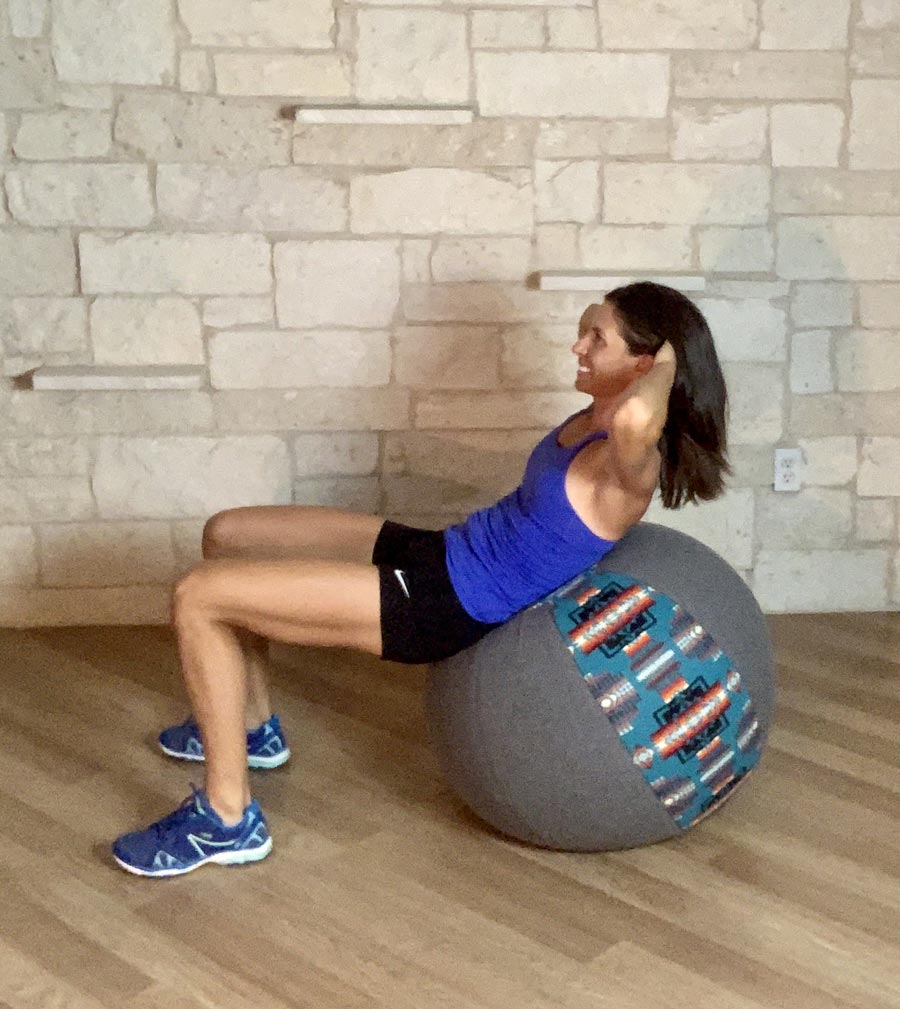
Step 2: Lift your shoulders off the ball and draw the low ribs closer to the hip bones as you “crunch” up.Return your shoulder blades to the ball as you lower down, returning to starting position.
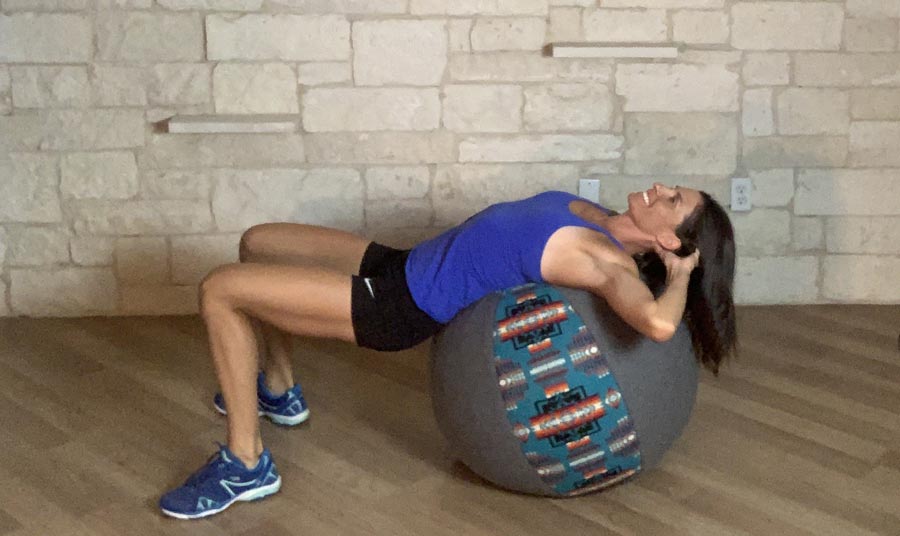
So, the next time your instructor or trainer says “time for crunches” your reaction should be to grab a stability ball, not only to protect your back and neck, but most important to make sure the abdominals are challenged properly with correct form to achieve the “six-pack” or whatever goal you desire. Join us next time for our final installment of “Exercises You Never Knew You Were Doing Wrong: The Total Body.”
 About the Author, Brook Benten Jimenez, M.Ed.
About the Author, Brook Benten Jimenez, M.Ed.
Brook is a Texas girl who has been trailblazing fitness for two decades. She champions continuing education and has impacted the field as a campus recreation fitness director, CEC provider, fitness magazine writer, and DVD workout star. Choreographing a few kettlebell videos in 2008 when kettlebells were relatively new to the American market gave her a platform as a group fitness guru in the strength and conditioning world. She has also received RKC & SFGII KB Certifications.

Strawberry and Pecan Spinach Salad
April showers bring May flowers, along with lots of green. Green vegetables have a multitude of vitamins, minerals and fiber, as well as being low in calories. Leafy greens have numerous health benefits including reducing the risk of obesity, lowering heart disease, reducing high blood pressure and enhancing brain function. Here is a favorite salad that even the kids may try.
Ingredients:
- Baby spinach- 8 oz (small container) or can break up large leaf spinach
- Strawberries- 2 cups sliced
- Pecans (halves or pieces)- ¾ cup (lightly toasted & sweetened- optional)
- Goat cheese or blue cheese (crumbled)- 4 ounces (or amount preferred)
Directions:
Pecans:
- If toasting pecans, place them in a dry pan over medium heat. Be sure to stir them often to thoroughly toast them. Make sure not to burn them. They should be aromatic.
- If you are sweetening them, add 1 tablespoon butter and 1 tablespoon sugar to the pan. Pour in pecans. Mix well until sugar and butter are melted and nuts are covered.
Salad:
- In a large bowl, add spinach, sliced strawberries and crumbled cheese and toss until well mixed.
- Add pecans (make sure they have cooled, if toasted.)
- Serve immediately (or refrigerate without nuts until ready to serve.)
- Add dressing of choice. Recommend a balsamic vinegar, poppyseed or Dijon mustard vinaigrette.
 About the Author, Amanda Fearheiley, RDN, LD, CPT
Amanda has been a registered and licensed dietitian for over 20 years and has been immersed in the fitness field for over 15 years. Her passion is helping others learn how to use food as fuel and food for improving health. She has worked with both day to day athletes as well as pro athletes. She currently resides in the Austin, TX, area with her husband and 3 children.
About the Author, Amanda Fearheiley, RDN, LD, CPT
Amanda has been a registered and licensed dietitian for over 20 years and has been immersed in the fitness field for over 15 years. Her passion is helping others learn how to use food as fuel and food for improving health. She has worked with both day to day athletes as well as pro athletes. She currently resides in the Austin, TX, area with her husband and 3 children.  We’re always looking for great content highlighting the newest things in the world of fitness. Please submit your article directly to editor@scwfit.com for immediate consideration!
We’re always looking for great content highlighting the newest things in the world of fitness. Please submit your article directly to editor@scwfit.com for immediate consideration! Spotlite, April 9, 2025
Spotlite, January 5, 2025
Spotlite, November 11, 2024
Spotlite, September 27, 2024
Spotlite, August 31, 2024
Spotlite, July 26, 2024
Spotlite, June 22, 2024
Spotlite, May 23, 2024
Spotlite, April 26, 2024
Spotlite, March 22, 2024
Spotlite, February 19, 2024
Spotlite, January 20, 2024
Spotlite, December 21, 2023
Spotlite, November 18, 2023
Spotlite, October 22, 2023
Spotlite, September 21, 2023
Spotlite, August 19, 2023
Spotlite, July 19, 2023
Spotlite, June 19, 2023
Spotlite, May 18, 2023
Spotlite, April 21, 2023
Spotlite, March 28, 2023
Spotlite, February 18, 2023
Spotlite, January 21, 2023
Spotlite, December 16, 2022
Spotlite, November 19, 2022
Spotlite, October 22, 2022
Spotlite, September 24, 2022
Spotlite, August 23, 2022
Spotlite, July 22, 2022
Spotlite, June 20, 2022
Spotlite, May 18, 2022
Spotlite, April 20, 2022
Spotlite, March 25, 2022
Spotlite, February 17, 2022
Spotlite, January 14, 2022
Spotlite, December 17, 2021
Spotlite, November 18, 2021
Spotlite, October 25, 2021
Spotlite, September 16, 2021
Spotlite, August 9, 2021
Spotlite, July 10, 2021
Spotlite, June 8, 2021
Spotlite, May 14, 2021
Spotlite, April 30, 2021
Spotlite, March 30, 2021
Spotlite, February 23, 2021
Spotlite, January 20, 2021


